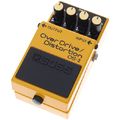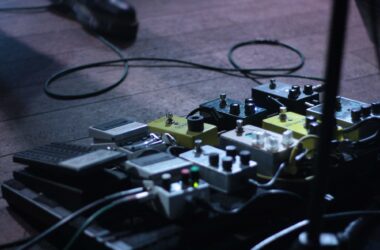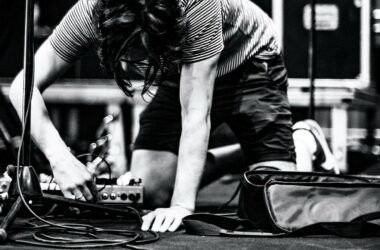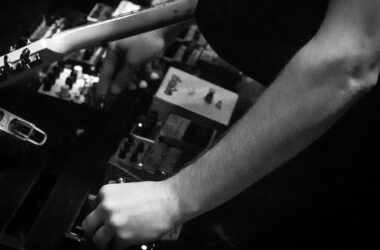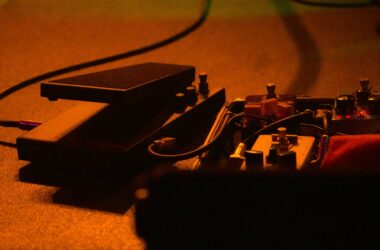Over the past few years, Mk.gee has established himself as one of the most intriguing musicians of his generation, thanks in large part to a singular, instantly recognizable guitar sound. Where many seek power or virtuosity, Mk.gee favors texture, dynamics and raw emotion.
In a landscape saturated with high-tech pedals and amps, Mk.gee has made a name for itself by sculpting a lo-fi, compressed and visceral grain that has become a benchmark for many guitarists in search of originality.
What makes Mk.gee’s sound so unique?
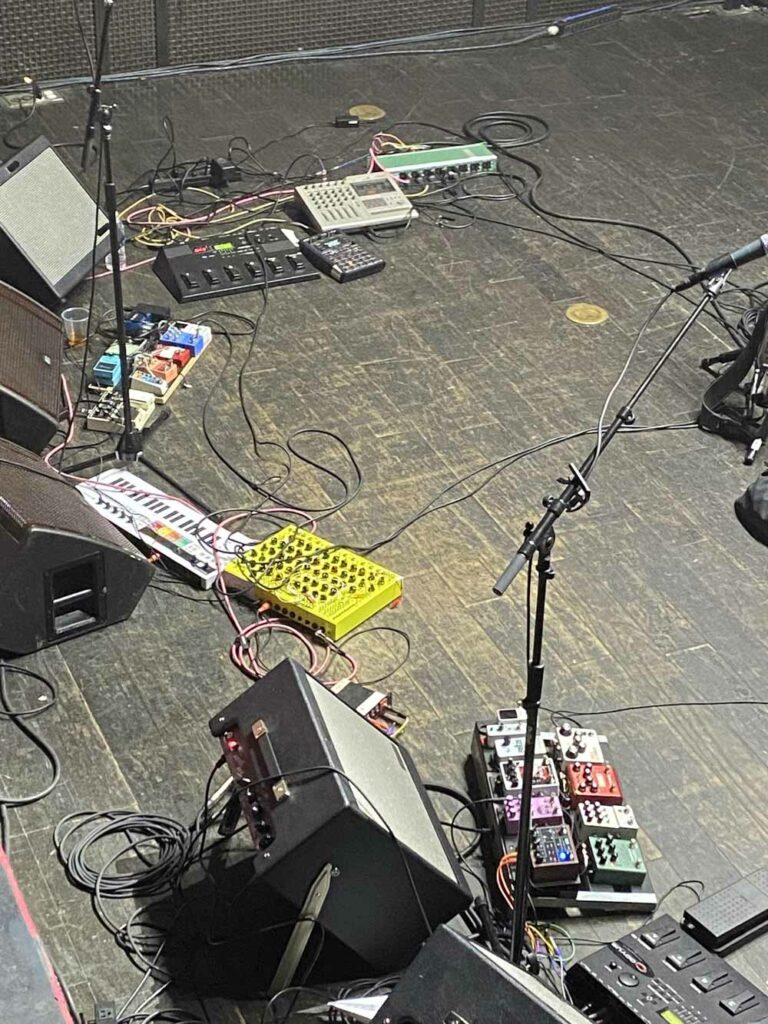
The heart of the “Mk.gee sound” is a guitar plugged without a traditional amp, directly into a Tascam Portastudio 424 MKI preamp (the famous 4-track cassette)… pushed hard. This preamp, used as a “false head”, gives an elastic, slimy, very midrange saturation, with a lo-fi grain that breathes transients and gets nicely dirty when attacked.
This sound became so distinctive that in 2025 JHS released the 424 Gain Stage, a pedal that faithfully recreates the Portastudio preamp (with dual gain stage, EQ and balanced XLR output for direct console connection).
When it comes to playing, Mk.gee favors dynamics (often finger-picked), airy melodic parts that leave plenty of room for the mix, and a “glued” rendering thanks to the natural compression of the preamp. On the album Two Star & the Dream Police (2024), this approach serves up pop/soul songs with reinvented 80s textures, acclaimed by the specialist press.
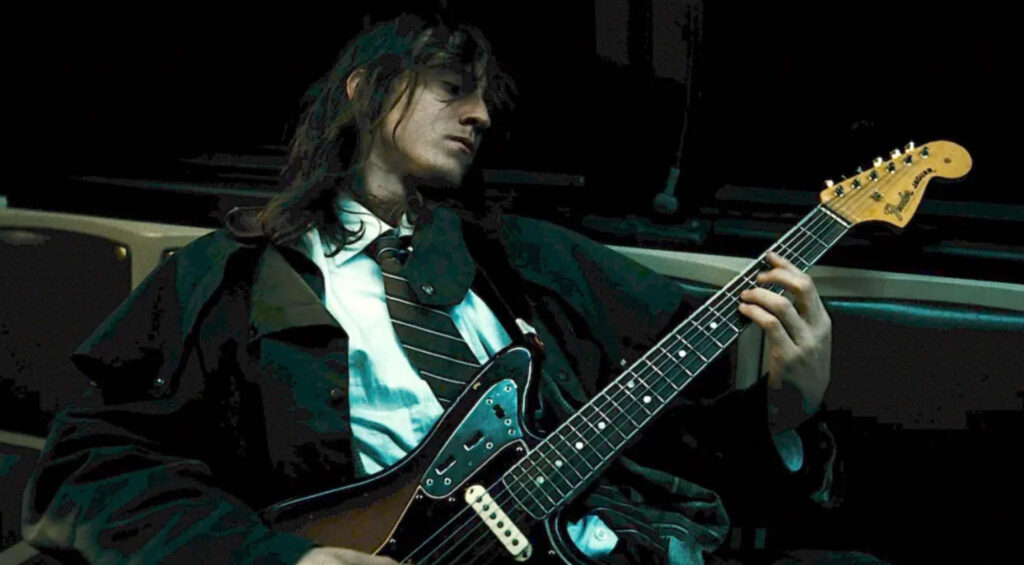
Guitars & playing
Mk.gee uses mainly a Fender Jaguar tuned and strung in baritone style, with a rich bass tone, almost “bass” at times. This configuration, combined with heavy strings and a finger-style attack, accentuates the 424’s thick, compressed feel.
👉 To get closer: prefer a guitar with a short pitch (Jaguar, Mustang, Jazzmaster), thicker strings, and work on attack nuances: the louder you play, the more the 424 crunches and saturates.
The central element: the Tascam 424
The basis of Mk.gee’s sound is the Tascam Portastudio 424 MKI used as a preamp: guitar → 424 → console/interface. No cabinet, no cab sim.
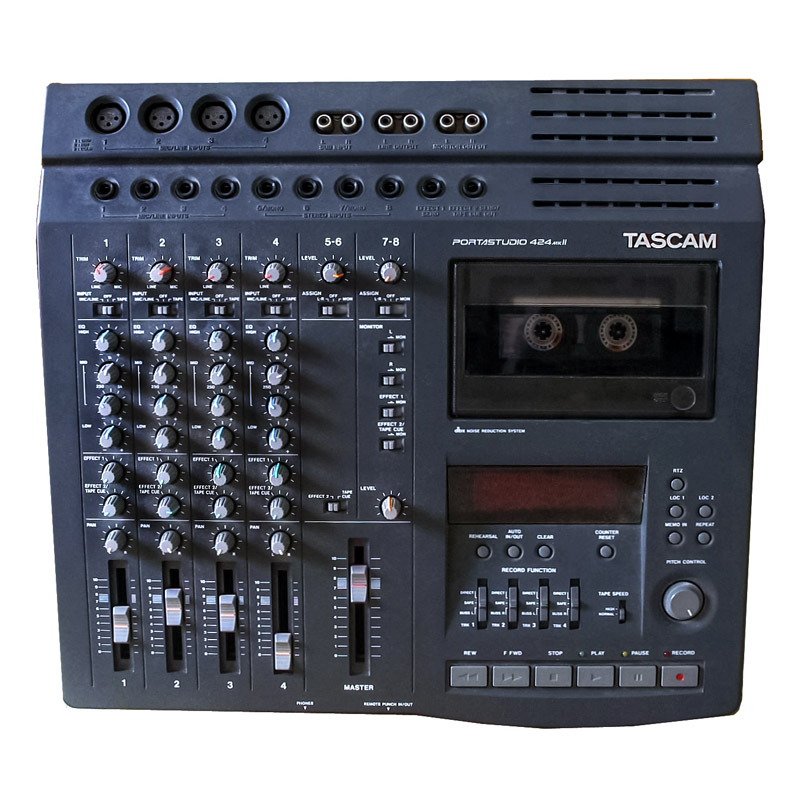
Alternatives :
- JHS 424 Gain Stage: recreates the grain of the MKI, with XLR output and dual gain stage. The simplest solution if you don’t want to lug around a Portastudio.
- Console/tape-ish preamps: certain DI preamps or “cassette” saturations can give a similar, if never identical, character.
- Audio Hertz Mk.pre plug-in: emulates the 424 preamp for home-studio or FRFR. Ideal for playing directly into an interface.
Pedals and main effects
Rainger FX Reverb-X
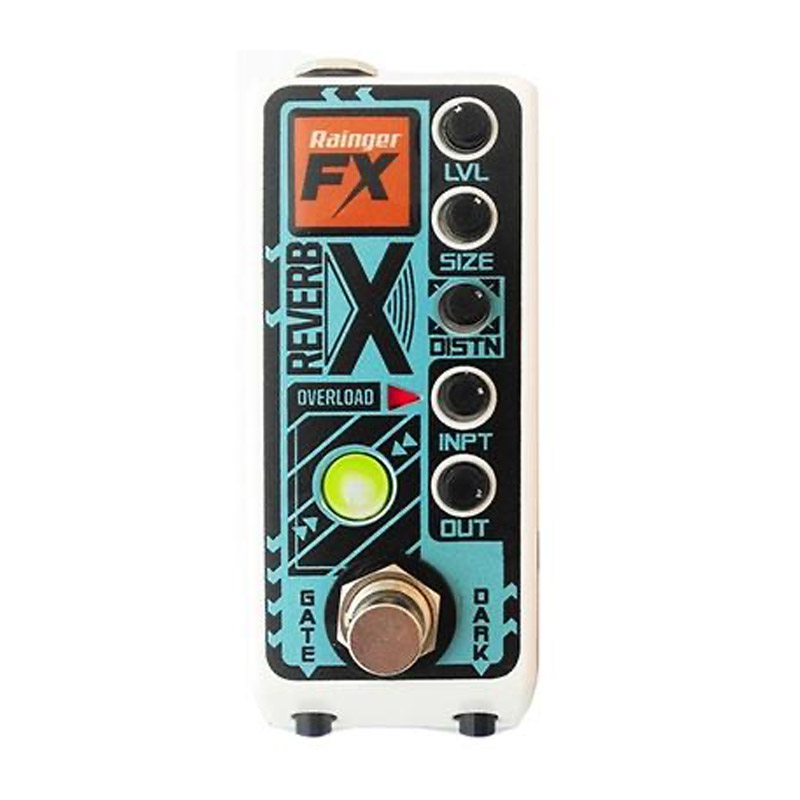
The Reverb-X is not a “classic” reverb: it offers broad, atmospheric textures ranging from discreet shimmers to futuristic ambiences. It allows you to create a wide sound space without losing definition. In the context of Mk.gee, it serves above all to give an impression of air and depth to the 424’s compressed signal.
Typical settings: Decay 2-3 s | Mix 20-25 % | Tone dark
Rainger FX Echo-X
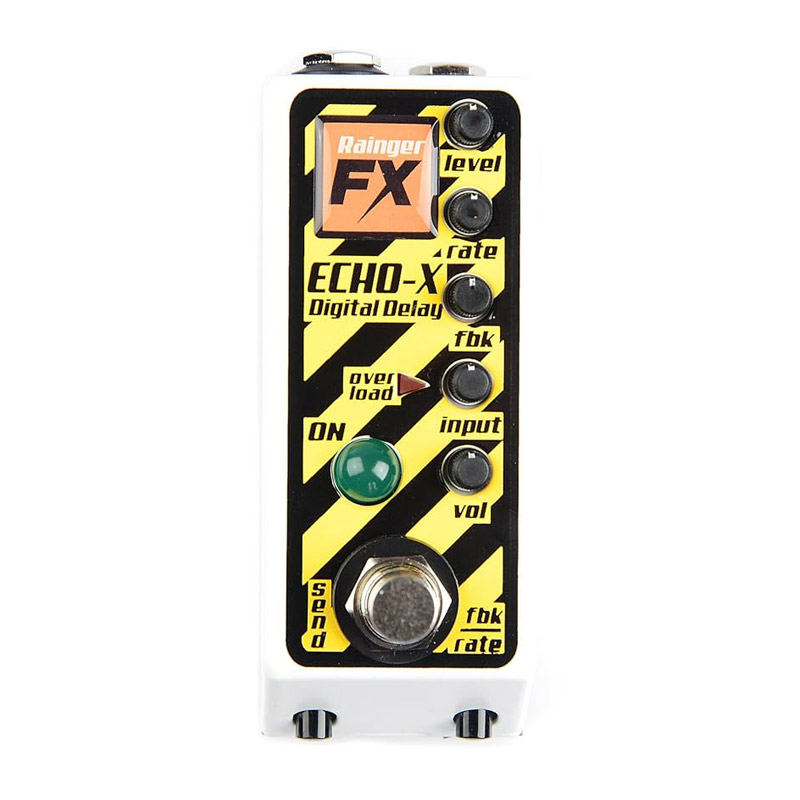
Delay compact is renowned for its very organic grain, akin to tape echo but with a modern stability. Mk.gee uses it to thicken his playing and give it depth, with a sci-fi feel that’s typical of Rainger FX creations. Its design and experimental approach fit in well with his sound universe.
Typical settings: Time 300-400 ms | Feedback 20-25 % | Mix 15-20 %.
Catalinbread Belle Epoch
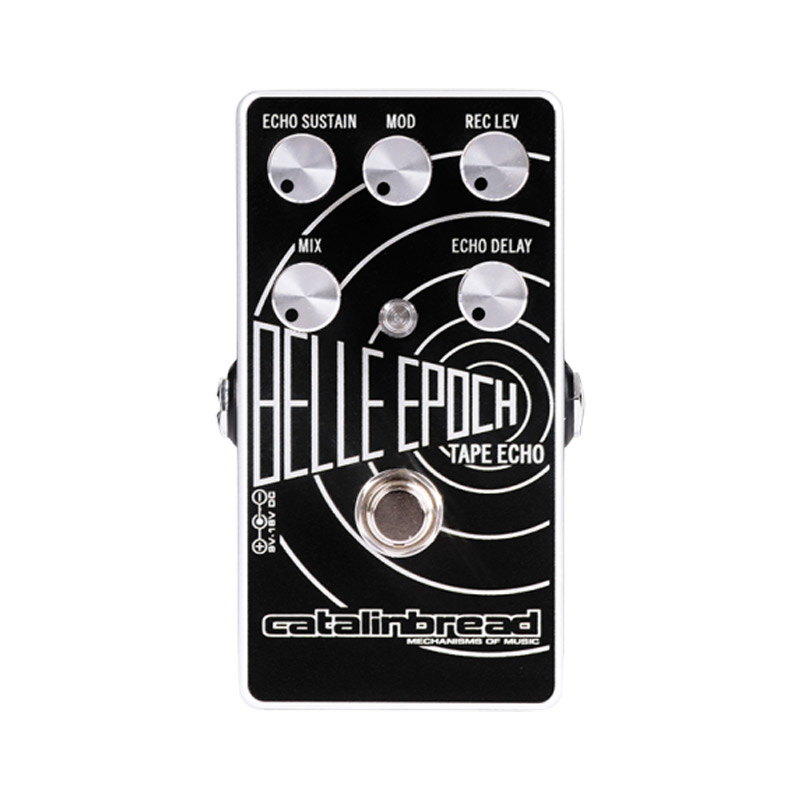
Inspired by the legendary Echoplex EP-3, the Belle Epoch recreates that analog tape echo grain, with its dark repeats and light compression. Mk.gee uses it for short, textured delays that stick to the phrasing without invading the mix. Even when set discreetly, it subtly colors the sound, just as the original EP-3 would.
Typical settings: Delay 250-350 ms | Light feedback | Mix 10-15 % | Record Level 11h
Boss CE-2W Waza Craft
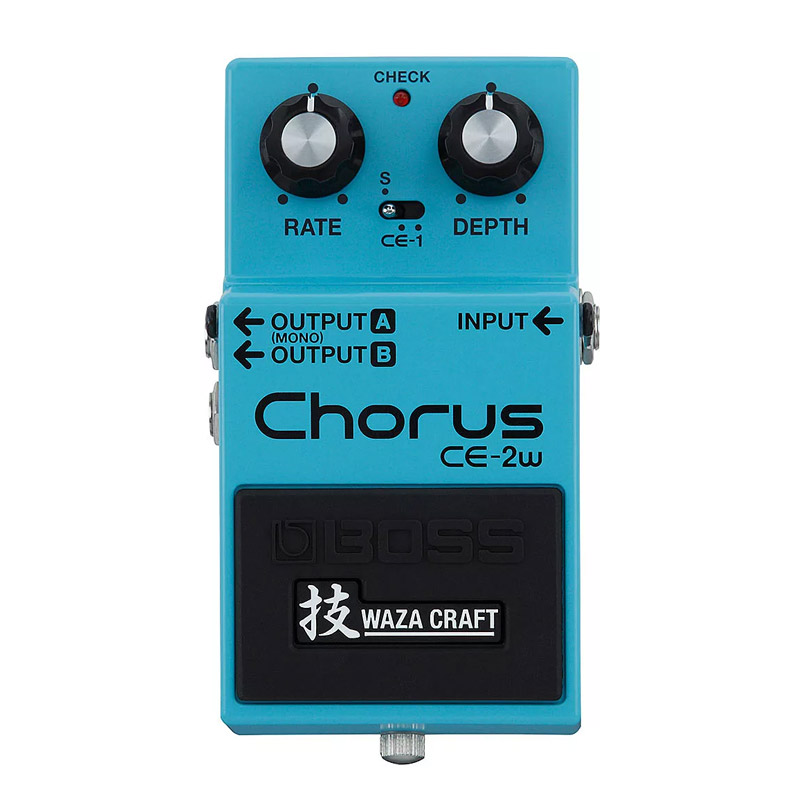
High-end reissue of the famous CE-2 chorus, with bonus CE-1 mode. It delivers a warm, subtle chorus that adds movement and fullness without masking the attacks. In Mk.gee’s playing, it accentuates the 80s feel and enhances his clean or slightly crunchy parts.
Typical settings: Rate 9h-10h | Depth 11h-12h | Mode CE-2
Boss BF-2 Flanger
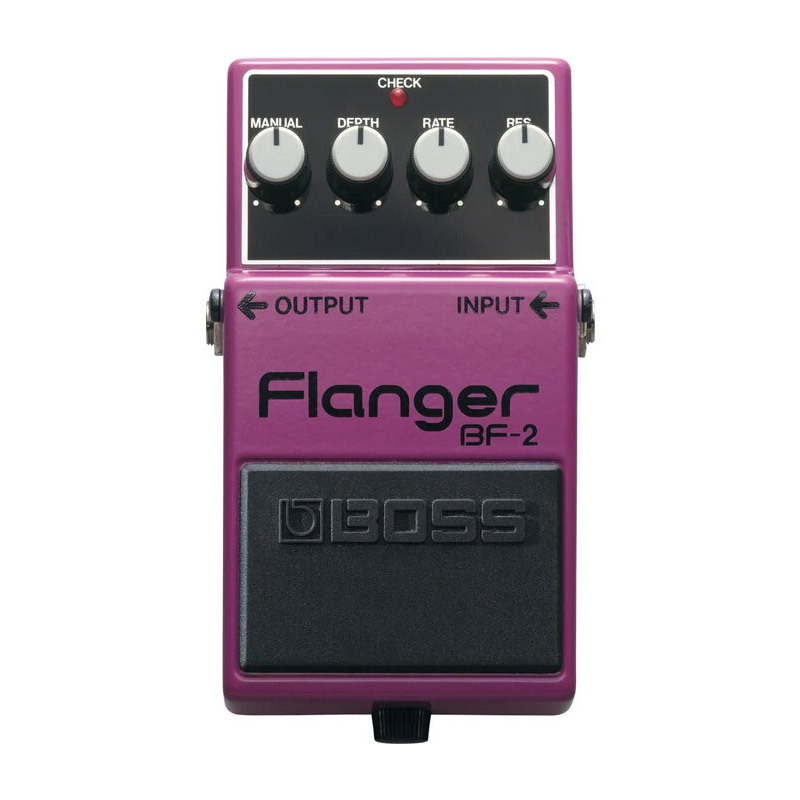
Released in the ’80s, the BF-2 has become a classic thanks to its versatility: pronounced metallic sweeps or more discreet modulations. Mk.gee uses it sparingly to create a subtle movement reminiscent of certain new wave productions.
Typical settings: Manual 11h | Depth 10h | Rate 9h-10h | Resonance 9h
Chase Bliss Mood (MkI or MkII depending on tour)
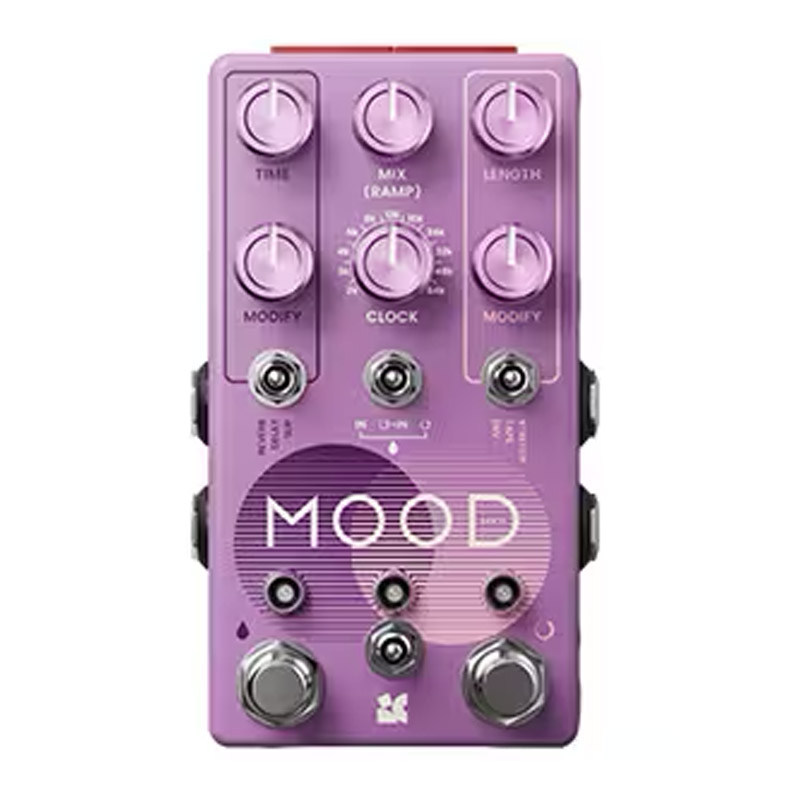
The Mood is a unique pedal designed for micro-loops, granularity and real-time processing. It captures a fragment of play and transforms it into glitch textures, reverses or floating layers. At Mk.gee, it intervenes from time to time to provide discreet and creative sonic surprises.
Typical settings: Very short loop | Mix 15-20% | Clock standard | Decay short
DigiTech Drop
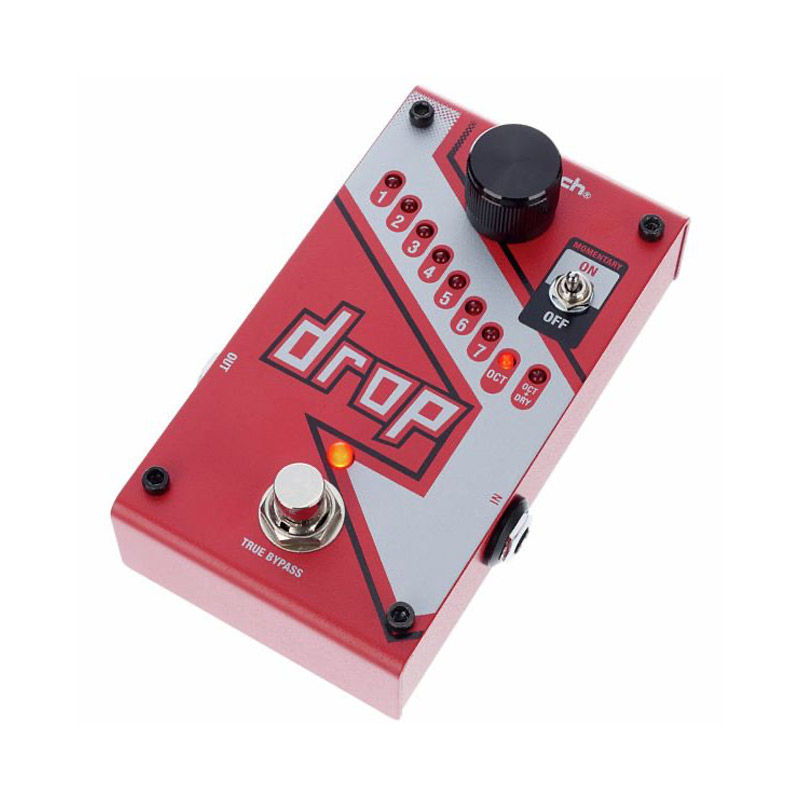
This pitch-shifting pedal lets you lower the key without changing the tuning. Mk.gee uses it to explore the lower registers and accentuate the “baritone” side of his Jaguar. It’s a simple, practical solution for varying tessitura without touching up the guitar.
Typical settings: Shift -1 or -2 tones | Latch Mode | Dry Signal ON
Some pedals often seen on his pedalboard
Empress Effects ParaEQ MkII
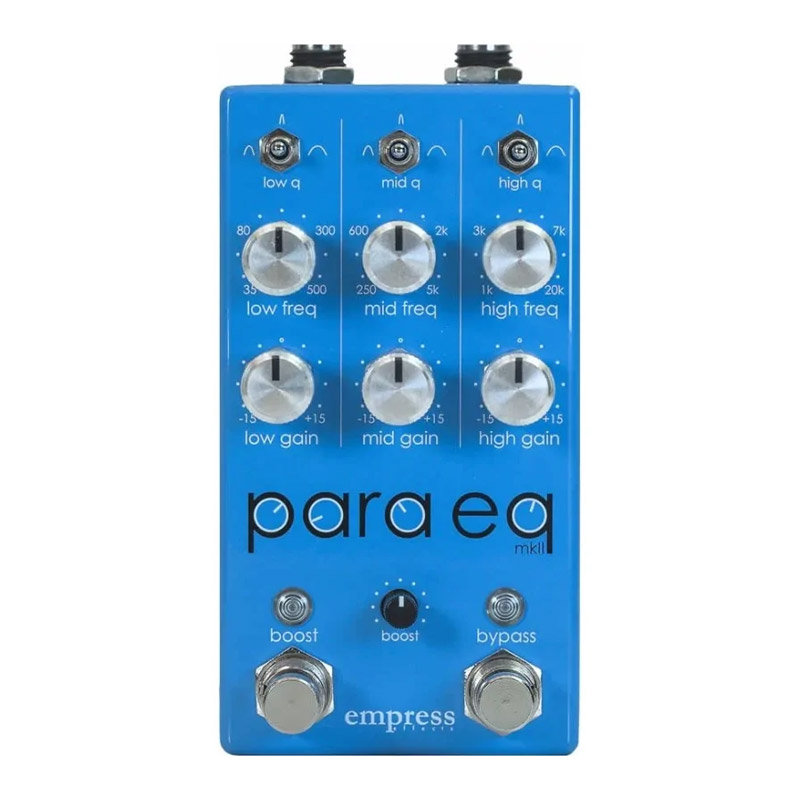
High-quality parametric equalizer, widely used for sculpting midrange and bass. In the context of a very midrange 424 preamp, it serves to rebalance and refine presence.
Typical settings: Low +2 dB | Mid Q tight | High very discreet
Boss DD-20 Giga Delay
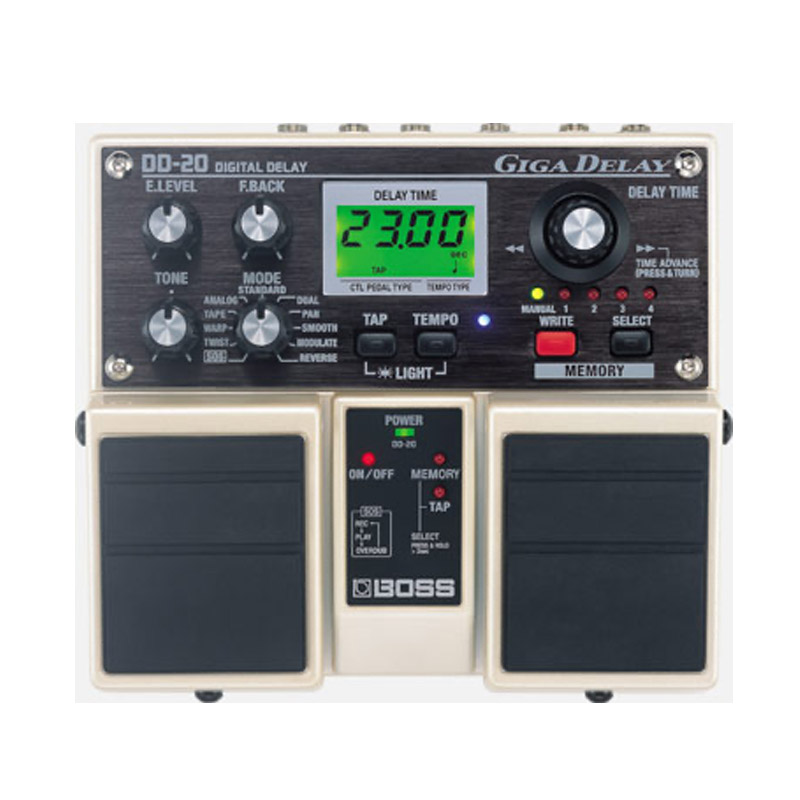
Versatile digital delay, capable of very long delays, reverse and multitap. Less colorful than a Belle Epoch, it offers modern options when Mk.gee needs more extended textures.
Typical settings: Time 400-500 ms | Moderate feedback | Tape/Analog mode
TC Electronic PolyTune
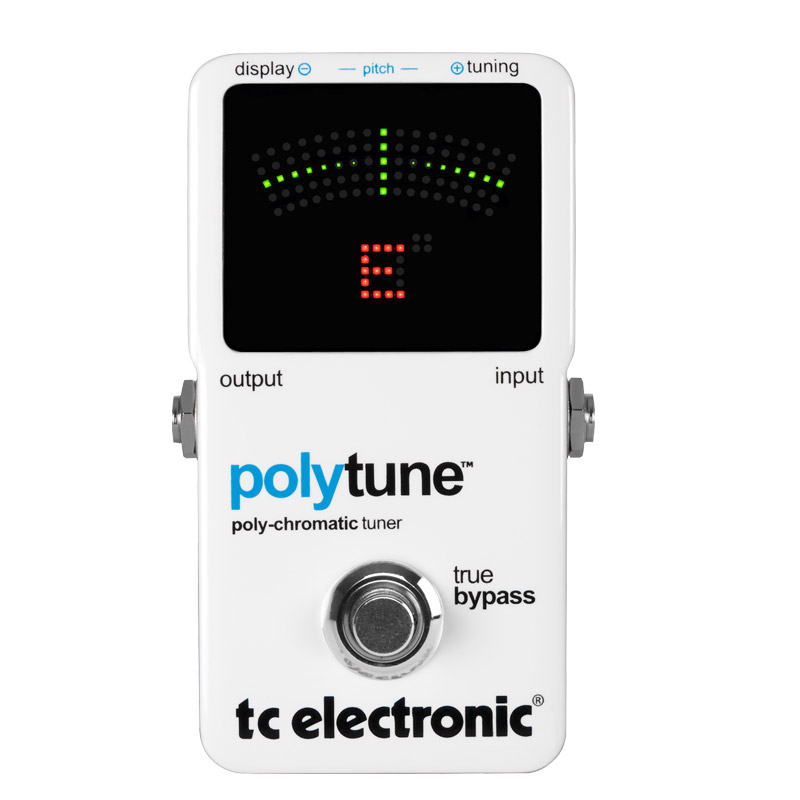
Reliable, compact and visible on stage. Indispensable but transparent in the chain, it remains a constant on the Mk.gee boards.
Typical settings: Poly mode for fast tuning | Strobe mode for precision tuning
Electro-Harmonix Hum Debugger
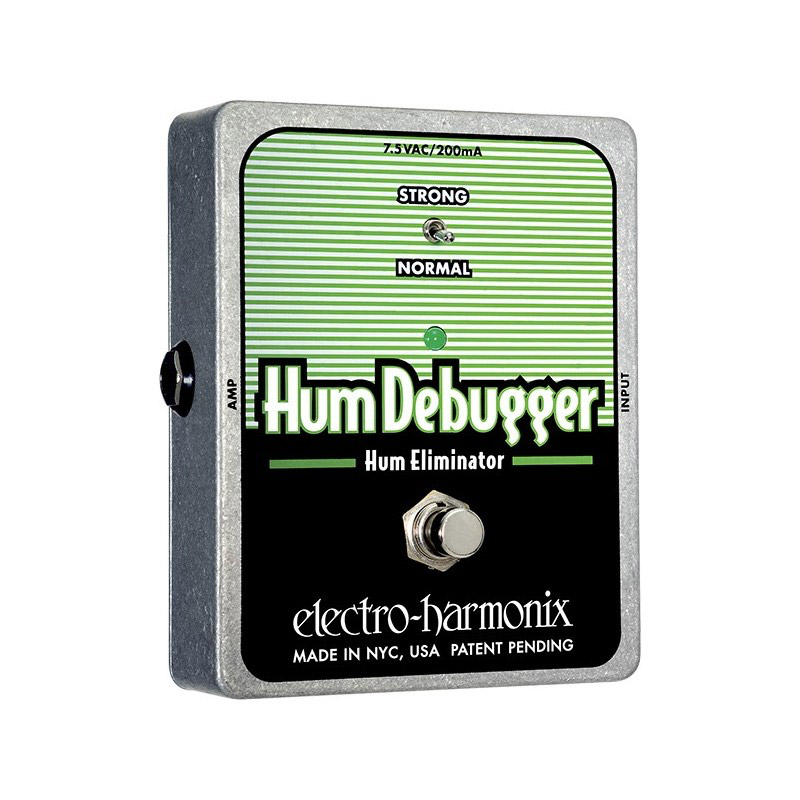
A specialized anti-hum to eliminate hum associated with single coils or DI setups. Handy when you’re using a 424 as an amp and need to keep the signal clean.
Typical settings: Normal mode | Blend Dry 100
Boss OS-2 OverDrive/Distortion
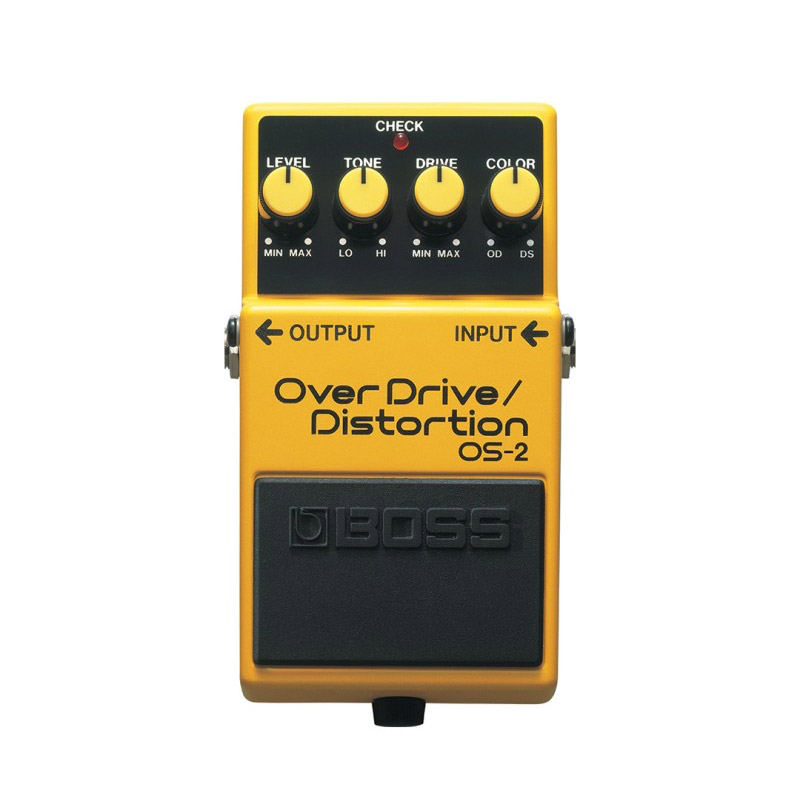
Less iconic in its setup, but spotted on some boards. It combines a gentle overdrive with a more aggressive distortion, useful as an alternative or complement to the grain of the 424.
Typical settings: Drive low (9h) | Color 12h | Level by unit
Roland VG-8 + GK sensor
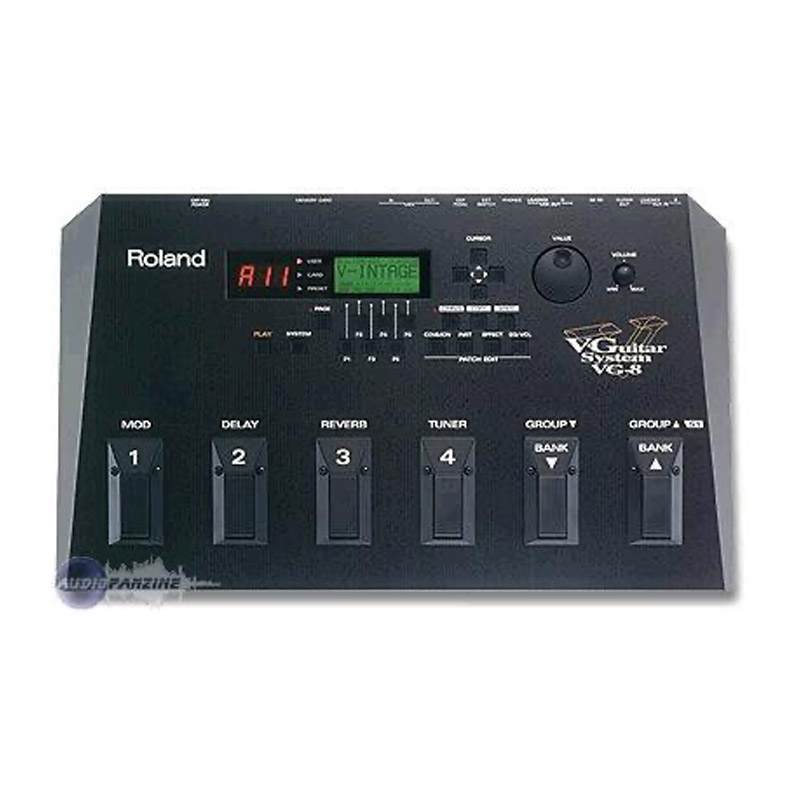
Not a pedal, but a crucial element in some live performances. The VG-8, combined with the guitar-mounted GK sensor, generates synthetic sounds and hybrid textures. Mk.gee uses it occasionally to flesh out its sound universe.
Typical settings: Discreet, often low-mixed synth patches
Mk.gee chaining
The entire chain is organized around the preamp. The guitar first passes through the utilities (tuner, Drop, Hum Debugger), then through the Tascam 424, which colors and compresses the signal. Next come modulations (CE-2W, BF-2), then delays and reverbs (Belle Epoch, Echo-X, Reverb-X) at the end of the chain to broaden the spectrum. The Mood is often placed last or in parallel, for occasional use. Finally, the signal is output directly to the front panel/console or interface, sometimes with Fender Tone Master monitors as stage monitors.
In a nutshell
- Pillar: Tascam 424 (or JHS 424 Gain Stage / Mk.pre plugin).
- Aesthetics: lo-fi compression, mid-focused, dynamic play.
- Key pedals: Rainger FX Echo-X & Reverb-X, Belle Epoch, CE-2W, BF-2, Mood, Drop.
- Frequent add-ons: ParaEQ, DD-20, PolyTune, Hum Debugger, VG-8.
- Chaining: utilities → 424 preamp → modulations → delays/reverbs → textures (Mood) → console.


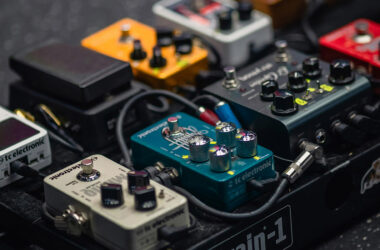

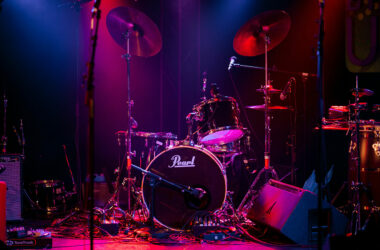
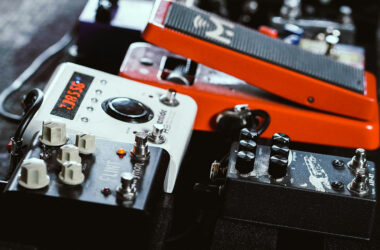


 Catalinbread Belle Epoch BOS
Catalinbread Belle Epoch BOS
 Boss CE-2w
Boss CE-2w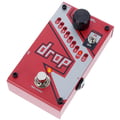
 Digitech The Drop
Digitech The Drop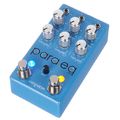
 Empress Effects ParaEQ MKII
Empress Effects ParaEQ MKII
 tc electronic PolyTune 3 Tuner/Buffer
tc electronic PolyTune 3 Tuner/Buffer